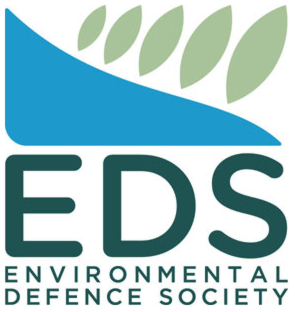New Zealand’s Air Quality Improving, But Winter Smoke Still An Issue

New data released today by LAWA (Land, Air, Water Aotearoa) shows that while air quality continues to improve in many parts of New Zealand, winter remains a period of elevated health risk. There is particular concern for towns where smoke from home heating becomes trapped near the ground during cold, still weather.
“Air quality in New Zealand has improved over time thanks to a combination of local and national action, but winter remains a challenge in many towns,” said Dr Chris Daughney, Chief Science Advisor for the collective of regional and unitary councils - Te Uru Kahika.
“When smoke from wood burners and coal fires builds up in calm, cold conditions, it can affect the health of whole communities.
“The good news is that monitored sites in most towns are now meeting national air quality standards for particulate matter (PM10) and continue to show improvements since monitoring began.
“However, most monitored places exceed international guidelines for fine particulate matter (PM2.5) which comes from combustion sources and poses significant health risks,” said Dr Daughney.
The LAWA Air Quality National Picture 2025 provides analyses of monitoring site data from regional and unitary councils across the country.
Although PM2.5is not yet regulated under New Zealand’s National Environmental Standards for Air Quality (NES-AQ), the National Picture outlines that 13 regions are now actively monitoring this harmful pollutant, and the number of monitored sites has increased in recent years.
In 2024, only three monitoring sites in New Zealand met both the daily and annual WHO guidelines for PM2.5. These were at Whareroa Marae in Mount Maunganui, Whangārei, and central Wellington. The 2021 WHO guidelines are stricter than previous guidelines and reflect growing understanding of the health impacts from long-term exposure to fine particles.
Dr Daughney said the results presented on the LAWA website reinforce the value of council monitoring networks.
“Although it is not yet regulated under a national standard, many regional and unitary councils are already monitoring the smaller PM2.5 particles to better understand local air quality and to prepare for future regulation. However, without a New Zealand-specific standard in place, it’s a challenge for councils to justify further investment in monitoring equipment and analysis.
“The science is clear that reducing fine particulate matter pollution improves public health, especially for children, older adults, and those with respiratory conditions,” said Dr Daughney.
While winter conditions continue to present challenges, the LAWA Air Quality National Picture also highlights definite progress. There are improving air quality trends for 30 of the 44 long-term PM10 monitoring sites over the last 10 years and only 4 sites have seen a decline.
LAWA Air Quality Science Lead Teresa Aberkane explains that air quality is fascinating because it responds to human behaviour.
“Many places like Timaru, Tokoroa, and Kaiapoi have taken active steps to reduce winter emissions, and we’re seeing those actions reflected in the data.
“That’s the value of ongoing monitoring, when we measure and report, we can take steps to make a difference to the air we breathe,” said Ms Aberkane.
Many of these improvements are the result of sustained investment by councils in cleaner heating technology, community education, and local bylaws aimed at phasing out high emission burning. Transport choices also have a big impact on air quality and walking, cycling, and public transport are cleaner options than private vehicle use.
LAWA Chair Dr Tim Davie said everyone can play a role in cleaner winter air.
“The data shows we’ve made good progress. Now it’s about staying on track and continuing to act where it matters most.
“With winter here, we’re encouraging people to check their local air quality and take steps to minimise smoke. Avoiding lighting fires on still weather nights is best, but if people are going to use their log burner, then using dry, untreated wood with a clean burning technique can help reduce the amount of pollution into the local neighbourhood.
“We’re pleased to make real-time air quality information available to New Zealanders for free on the LAWA website, alongside useful evidence-backed factsheets,” said Dr Davie.
Air quality information for 150 monitoring sites is available at www.lawa.org.nz/explore-data/air-quality, along with practical tips on what households can do to help.
Further information
- PM2.5 and PM10 are forms of air pollution measured in micrometres. PM2.5 poses greater health risks due to its ability to enter the lungs and bloodstream.
- The World Health Organization’s 2021 air quality guidelines are based on updated scientific evidence of health impacts from fine particulate matter.
The Ministry for the Environment has announced that the National Environmental Standards for Air Quality (NES-AQ) will be reviewed and updated by 2026 to include PM2.5.


 Gordon Campbell: On Why Leakers Are Essential To The Public Good
Gordon Campbell: On Why Leakers Are Essential To The Public Good The Tree Council: Auckland Council Notifies Plan Change 113 Notable Trees
The Tree Council: Auckland Council Notifies Plan Change 113 Notable Trees ACT New Zealand: ACT New Zealand Celebration Brunch - David Seymour's First Speech as Deputy PM
ACT New Zealand: ACT New Zealand Celebration Brunch - David Seymour's First Speech as Deputy PM NZ Police: Operation Purple | Anti-Social Road User Gathering In Levin
NZ Police: Operation Purple | Anti-Social Road User Gathering In Levin New Zealand Defence Force: The Latest Update On The HMNZS Manawanui Response
New Zealand Defence Force: The Latest Update On The HMNZS Manawanui Response NZCTU: NZCTU Release Detailed Budget 2025 Analysis
NZCTU: NZCTU Release Detailed Budget 2025 Analysis Department of Conservation: DOC Reveals Surprising Toilet Paper Stats
Department of Conservation: DOC Reveals Surprising Toilet Paper Stats


